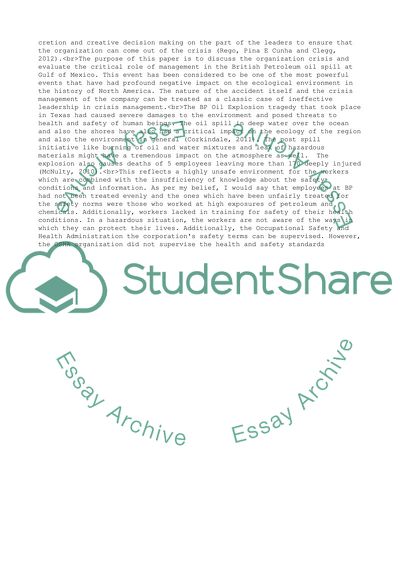Cite this document
(“BP & the Gulf of Mexico oil spill: developing a critical view of the Essay”, n.d.)
BP & the Gulf of Mexico oil spill: developing a critical view of the Essay. Retrieved from https://studentshare.org/management/1655539-bp-the-gulf-of-mexico-oil-spill-developing-a-critical-view-of-the-leadership-and-coaching-literature-as-preparation-for-coaching-practice
BP & the Gulf of Mexico oil spill: developing a critical view of the Essay. Retrieved from https://studentshare.org/management/1655539-bp-the-gulf-of-mexico-oil-spill-developing-a-critical-view-of-the-leadership-and-coaching-literature-as-preparation-for-coaching-practice
(BP & the Gulf of Mexico Oil Spill: Developing a Critical View of the Essay)
BP & the Gulf of Mexico Oil Spill: Developing a Critical View of the Essay. https://studentshare.org/management/1655539-bp-the-gulf-of-mexico-oil-spill-developing-a-critical-view-of-the-leadership-and-coaching-literature-as-preparation-for-coaching-practice.
BP & the Gulf of Mexico Oil Spill: Developing a Critical View of the Essay. https://studentshare.org/management/1655539-bp-the-gulf-of-mexico-oil-spill-developing-a-critical-view-of-the-leadership-and-coaching-literature-as-preparation-for-coaching-practice.
“BP & the Gulf of Mexico Oil Spill: Developing a Critical View of the Essay”, n.d. https://studentshare.org/management/1655539-bp-the-gulf-of-mexico-oil-spill-developing-a-critical-view-of-the-leadership-and-coaching-literature-as-preparation-for-coaching-practice.


